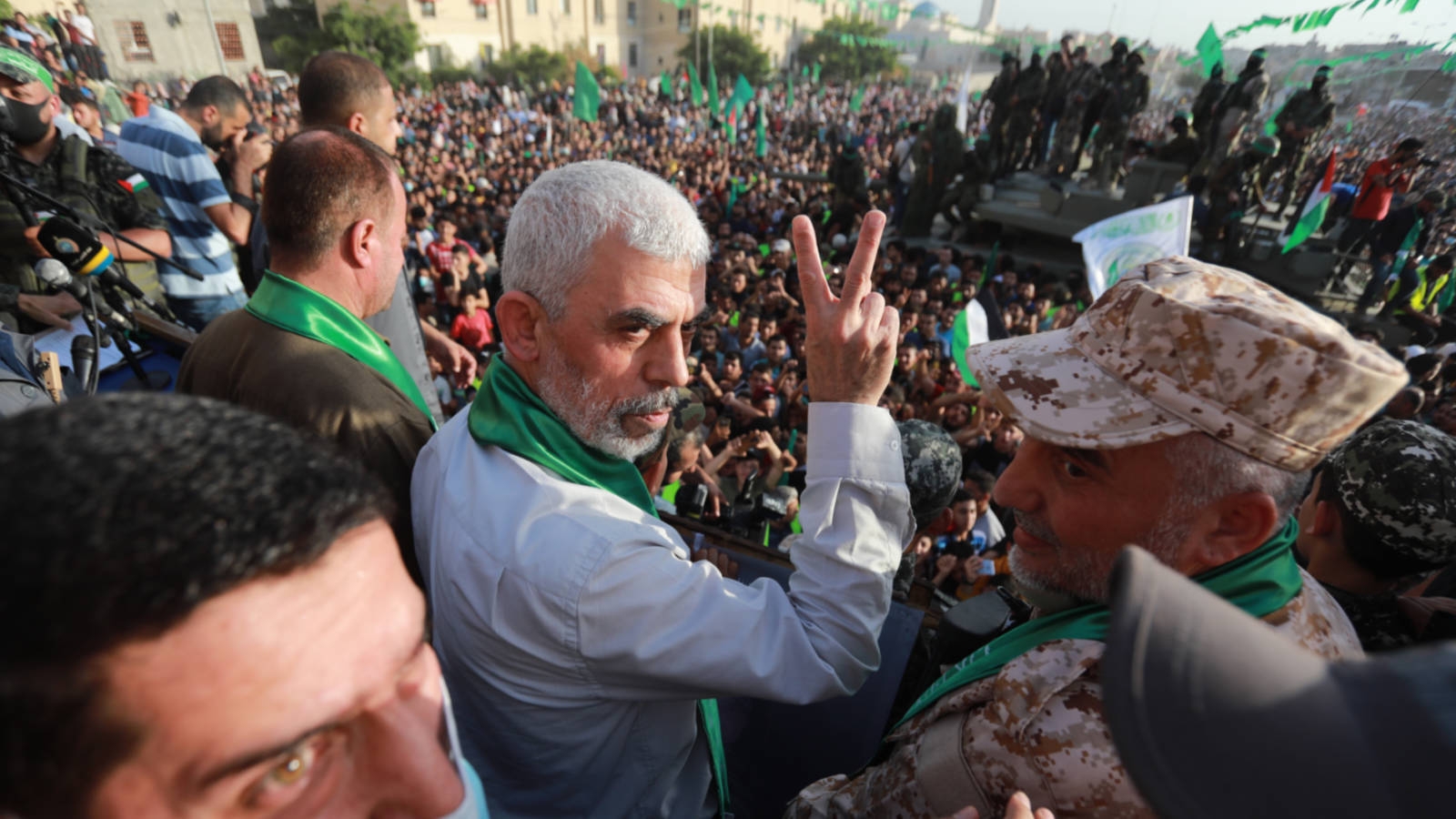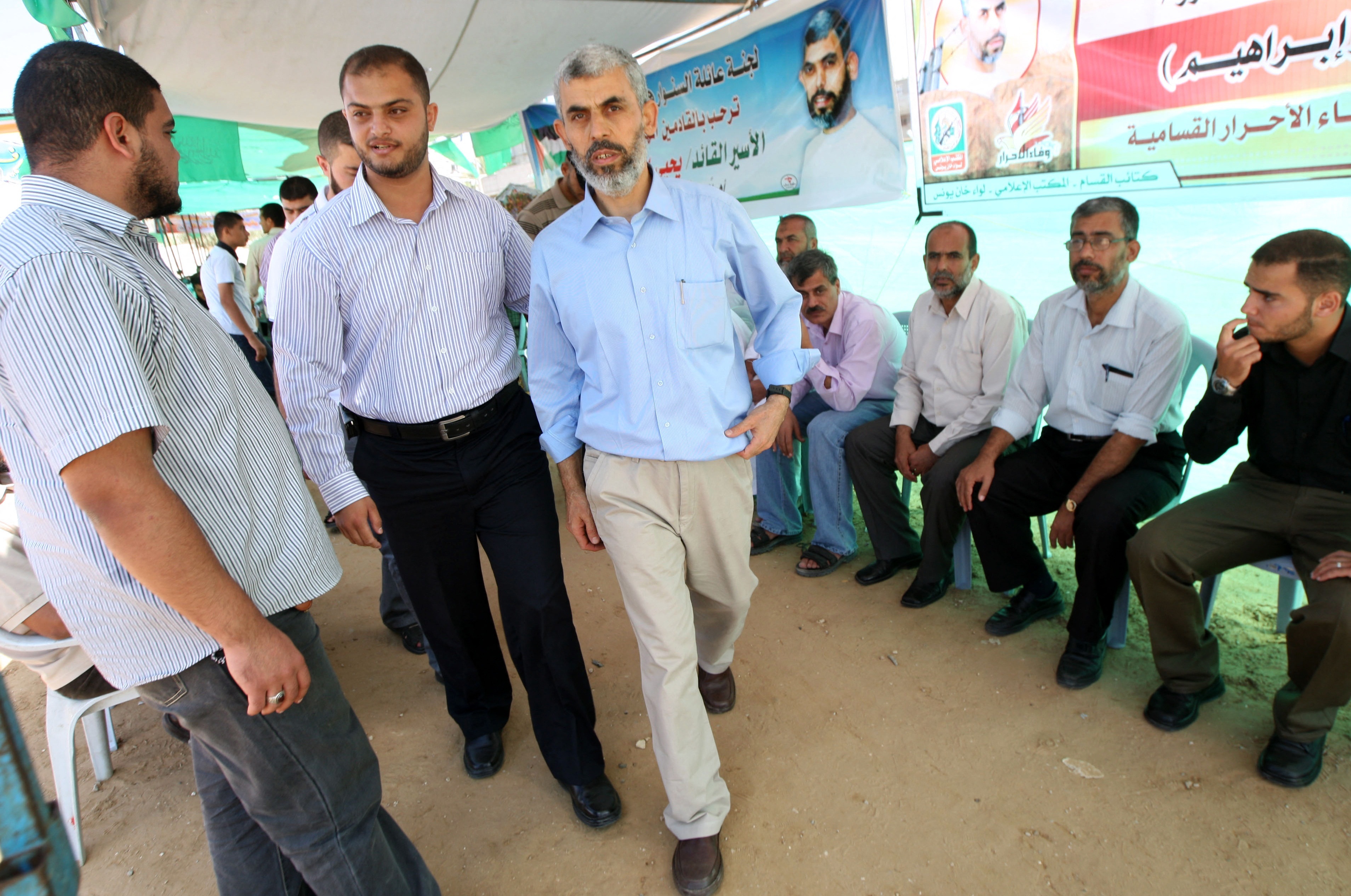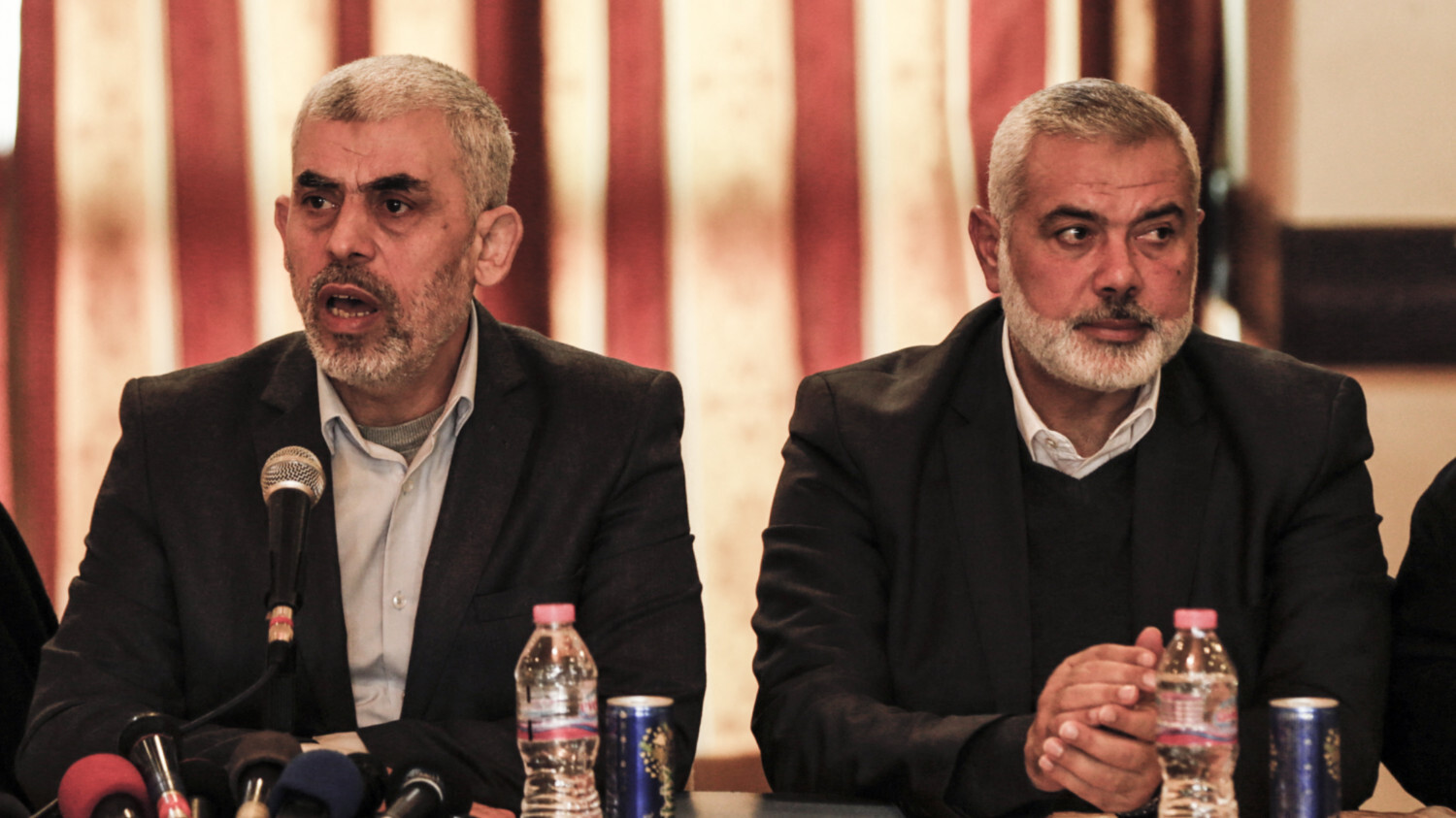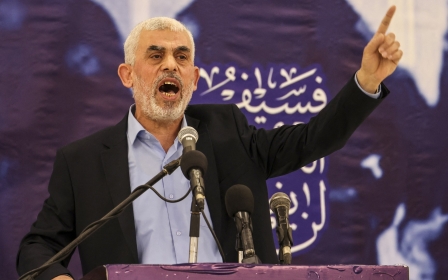Yahya Sinwar: The refugee and prisoner who went on to lead Hamas

Yahya Sinwar, Israel’s most wanted man, has reportedly been killed in Gaza. The operation leading to Sinwar's death took place on Wednesday.
Israeli foreign minister Israel Katz on Thursday said Israel had killed the Hamas leader in a message sent to his counterparts around the world.
The Israeli military also confirmed on Thursday that Sinwar had been killed.
Hamas has not yet confirmed the killing.
Earlier, Israel’s military said it was checking the possibility through forensics and DNA testing if the leader of Hamas was “eliminated” during an operation in Gaza.
New MEE newsletter: Jerusalem Dispatch
Sign up to get the latest insights and analysis on Israel-Palestine, alongside Turkey Unpacked and other MEE newsletters
The Israeli army said that "three terrorists were eliminated", adding that the military and Shin Bet security service were "checking the possibility that one of the terrorists was Yahya Sinwar".
"In the building where the terrorists were eliminated, there were no signs of the presence of hostages in the area," the Israeli army said.
The 62-year-old became leader of Hamas in August, days after his predecessor Ismail Haniyeh was killed in an Israeli attack carried out in Tehran.
Student activist to long-time prisoner
Sinwar was born in Khan Younis refugee camp, in southern Gaza, in 1962.
His parents were forcibly displaced by Zionist militias from their home in Askhelon in 1948 during the Nakba (catastrophe), when 750,000 Palestinians were kicked out of their homes.
He read Arab studies at the Islamic University of Gaza - where he got his first taste for student politics and activism.
It was at university, in 1982, that he was arrested for the first time by Israeli authorities for involvement in anti-occupation activism.
He was re-arrested three years later, and subsequently met Ahmed Yassin, who would go on to found Hamas. Yassin brought Sinwar into his inner circle.
Sinwar then co-founded Munazzamat al-Jihad w'al-Dawa, or Majd, which was set up to hunt Palestinian collaborators with Israel. It became the first security apparatus of the newly formed Hamas.
In 1988, he was again arrested by Israeli forces and this time given four life sentences - the equivalent of 426 years in jail.
He was accused of involvement in the capture and death of two Israeli soldiers and four suspected Palestinian spies. Thus began a 23-year stint in Israeli jail.
In captivity he learned Hebrew, frequently reading Israeli newspapers and immersing himself in Israeli politics and culture. He said it helped him better understand his enemy.
He also wrote a novel, titled The Thorn and the Carnation, which drew on his own life experiences of growing up in Gaza.
In 2011, Benjamin Netanyahu, Israel’s prime minister, agreed to a deal which saw 1,047 Palestinian prisoners released in exchange for Gilad Shalit - an Israeli soldier who had been abducted in 2006.
Sinwar was one of the most prominent prisoners to be freed as part of that deal.
Rise to top of Hamas
He quickly rose through the ranks of Hamas upon release, and within a year was elected to its political bureau.
In particular, he was tasked with coordinating with the Qassam Brigades, the armed wing of Hamas.
Sinwar was heavily involved, both politically and militarily, in Hamas’s efforts during the seven-week war with Israel in the summer of 2014. Months after that war, the United States added Sinwar to a list labelling him a “specially designated global terrorist”.
In 2017, he became the head of Hamas in Gaza - a role he would hold until a few months ago.
Also in 2017, he spearheaded Hamas' reconciliation talks with Fatah and the Palestinian Authority (PA) under the supervision of Egypt, which he maintained a close security relationship with.
"[Sinwar] is a strong supporter of Palestinian unity," Bassem Naim, a Hamas official, told Middle East Eye earlier this year.
His tactics have included both non-violent and armed actions.
In 2018, he played a leading role in organising the "Great March of Return" peaceful protests, which demanded an end to the siege on Gaza and the right of return for refugees. It was brutally cracked down on by Israeli forces, who killed 230 protesters.
He also spearheaded Operation Sword of Jerusalem, Hamas’s name for its operation in response to Israel’s bombardment of Gaza between 6 and 21 May 2021.
Most notably, he is thought to have been the architect of Operation Al-Aqsa Flood, the Palestinian group’s name for its attack on 7 October 2023.
The surprise attack on southern Israel killed more than 1,100 people and captured 250 others who were taken to Gaza.
Israeli forces have since killed over 42,000 Palestinians.
Throughout the war, Sinwar had not been seen publicly.
Several Israeli captives who were later released said they saw or spoke to Sinwar in the tunnels.
In August, a week after the Israeli assassination of then-Hamas political chief Haniyeh, Sinwar was chosen as successor.
It was a surprise and bold move - many had expected Khaled Meshaal, based in Doha, to take up the role he had previously held.
"By unifying the military and political leadership in one man, and as powerful as Sinwar, Hamas sends a message of unity and resilience," Khaled Hroub, researcher and expert on Hamas, told MEE at the time.
The move showed that Hamas' leaders based in Gaza, under the leadership of Sinwar, had continued to grow in importance within the organisation, while those based in Doha and abroad were somewhat marginalised.
His ascent also showed the importance of Hamas’ relationship with Iran.
Sinwar had a close relationship with Tehran, unlike Meshaal, whose ties with Iran became fraught after he distanced himself from Bashar al-Assad’s government in Syria following the outbreak of the Syrian civil war.
All these conversations will likely have to occur again among Hamas’s hierarchy, as it picks another new leader.
Middle East Eye delivers independent and unrivalled coverage and analysis of the Middle East, North Africa and beyond. To learn more about republishing this content and the associated fees, please fill out this form. More about MEE can be found here.






